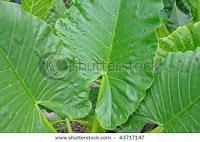Identify External Features of Plants
Explain the Similarities & Differences between Plants
Please click :
Grouping of Plants
We can group plants according to their similar external features.
Stem
- Some plant have woody stems e.g. hibiscus plant, rubber tree, rose plant and durian tree.
- Some plant have non-woody/soft stems e.g. banana plant, sunflower plant, ferns and balsam plant.
Do you know?
The fern is a plant that reproduces using spores. We may find the spores underneath the leaves of the fern.
woody stem non-woody stem
Flowers
- Some plants produce flowers and some do not.
- Plants that produce flowers are called flowering plants e.g. rafflesia plant, tomato plant, rambutan tree, grass, cactus and paddy.
- Plants that do not produce flowers are called non-flowering plants e.g. staghorn fern, mushroom and bamboo.
Do you know?
The rafflesia plant has no stems, leaves or true roots.
flowering plant non-flowering plant
Leaves
- Plants can be grouped based on the surface of the leaf. Some plants have leaves with smooth and shiny surfaces e.g. banana plant, spiderlily and yam plant. Whilst some have rough and dull surfaces e.g. sunflower, chrysanthemum, fern and coconut tree
- Leaves are normally green in colour. However, there are some plants with leaves' coloured red, yellow or purple e.g. bougainvillea, croton and mother-in-law's tongue.
- Plants can also be grouped according to the shape of leaves. Oval shaped leaves e.g. mango tree and canna plant. Long leaves e.g. sugar cane plant, pandanus and lallang. Irregular shaped leaves e.g. papaya plant and chrysanthemum.
- Plants also can be grouped according to the edges of the shaped leaves i.e. tooth-edged, smooth-edged or lobe edged. Tooth-edged e.g. rose plant; smooth-edged e.g. balsam plant; lobe edged e.g. papaya plant and maple tree.
Do you know?
Sugar cane plants do not have fruits.
smooth & shiny surface rough & dull surface
yam plant sunflower
leaves' coloured red leaves' coloured red
croton plant hibiscus plant
long leaves
sugar cane plants
oval leaves irregular plants
yam plants papaya plants
smooth-edged leaves tooth-edged leaves
balsam plants rose plants
lobe edged
maple leavesDifferent Ways of Grouping of Plants
- Plants can be grouped in different ways based on similar or common external features.
- For examples these flowering plants i.e. pea plant, pineapple plant, banana plant, rambutan tree, hibiscus plant and bougainvillea plant. They can also be grouped like this:
- soft stem > pea plant, pineapple plant and banana plant
- woody stem > rambutan tree, hibiscus plant and bougainvillea plant
Do you know?
The actual flower of bougainvillea plant is small and generally white, but each cluster of three flowers is surrounded by three or six bracts with the bright colors associated with the plant, including pink, magenta, purple, red, orange, white, or yellow.














